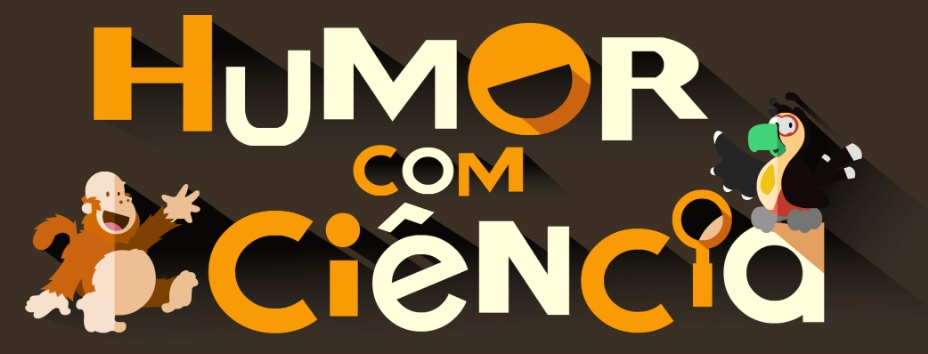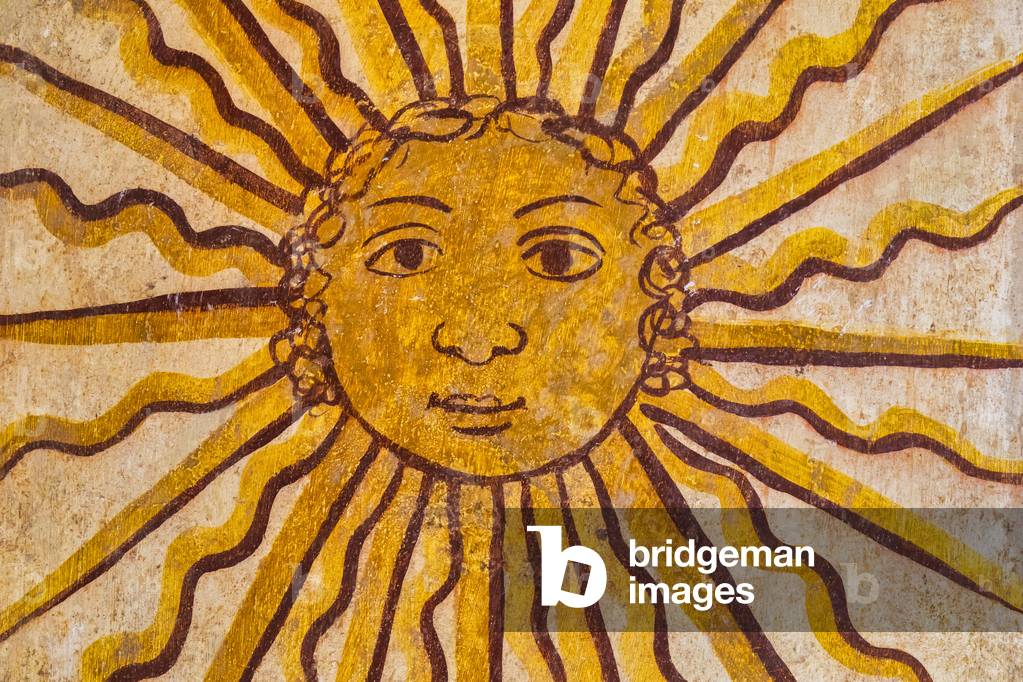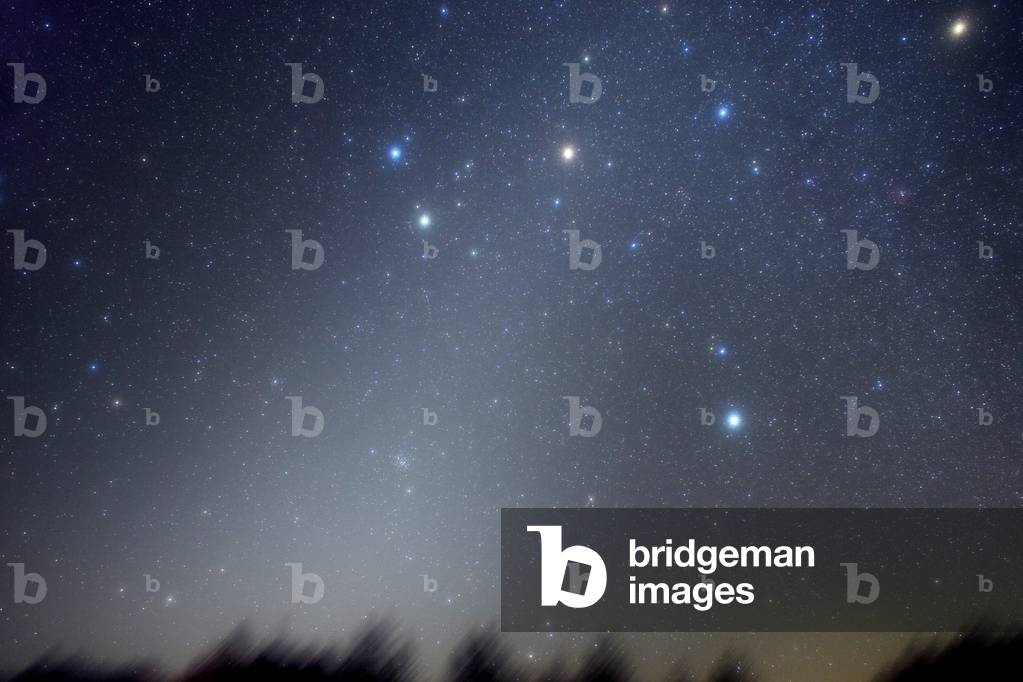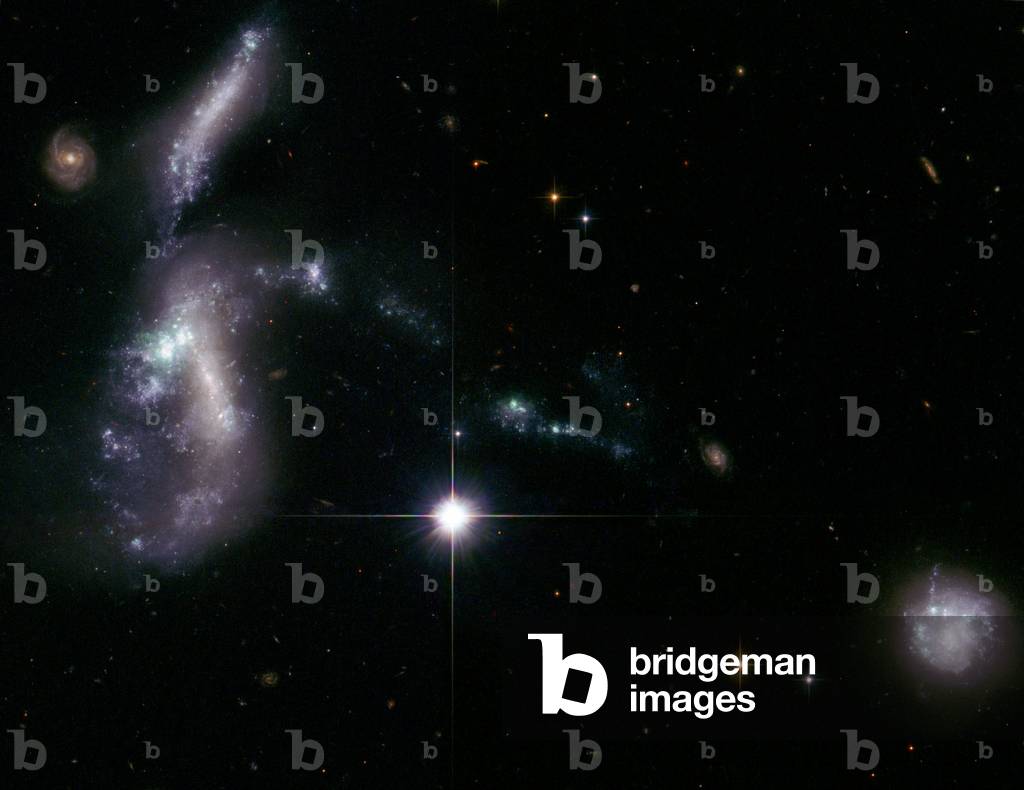
PIX4617892
Nebuleuses de la tete de cheval et M42 dans Orion - Orion deepfield - Nebuleuse obscure de la tete de cheval (IC434 - B33). Plus bas, la grande nebuleuse d'Orion (M42) vaste region de formation d'etoiles. Mosaique d'images obtenues pendant plus de 20 heures de pose, avec un filtre H - Alpha. This large complex of nebulosity is located about 1,500 light years away in Orion. The Orion complex is a gigantic stellar nursery where stars are forming out of the dust and gas in the region. Young energetic stars excite the gas in the region ionizing it and causing it to glow in the hydrogen - alpha and oxygen III emission lines. The brightest star in the photo at upper right at magnitude 1.8 is Alnilam, the middle star of the three distinctive stars in the belt of Orion. At the left is the Flame, NGC 2024, and below it is dark nebula B33, the Horsehead Nebula. Below is a patch of blue reflection nebulosity NGC 1973 - 4 - 5 and bottom is the beautiful Orion Nebula, M 42. Long - exposure image with an Hydrogen alpha filter
DC








































































